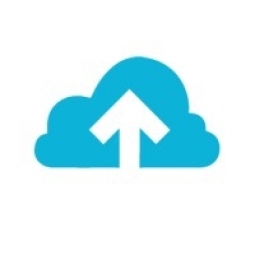Technology Category
- Sensors - Voltage Sensors
Applicable Industries
- Healthcare & Hospitals
- Life Sciences
Applicable Functions
- Maintenance
Use Cases
- Inventory Management
- Leasing Finance Automation
Services
- System Integration
About The Customer
The customer is a large medical instrument company with over 13,000 employees. As a leader in the life sciences industry, the company frequently acquires other companies, expanding its corporate real estate portfolio. The company values robust data and reporting, and it required a new enterprise space management solution that could maintain its existing processes, enhance its reporting functions, and be implemented quickly to avoid interrupting business operations. The company also wanted to transition from an on-premises solution to a cloud-based one to reduce costs and facilitate future upgrades.
The Challenge
A large medical instrument company was seeking to upgrade its existing enterprise space management solution. The company had a deeply ingrained culture and processes that it wanted to maintain in the new solution. It also needed to consider future additions to its corporate real estate portfolio due to its frequent acquisitions of other companies. The company recognized the importance of robust data and reporting, and wanted to enhance these functions in the new system. It needed to report on occupancy, space tracking, and its corporate real estate footprint across sites to manage the chargebacks to specific departments. The company was accustomed to managing its real estate portfolio and providing frequent reports to leadership. It required the new system to be up and running very quickly to ensure business operations were not interrupted. The company also wanted to transition from an on-premises instance to a cloud-based solution to reduce cost of ownership and facilitate future upgrades.
The Solution
The company partnered with Nuvolo to maintain many of its existing processes. It consolidated reports, facilitating space chargebacks and allocations. The company also utilized the cost center upload feature, enabling the cost center file to be sent monthly via email for auto upload. The company focused on actionable dashboards as the default home screen, so the space planning team can easily identify data gaps and priorities. The company was able to keep its operations running smoothly, with a very supportive and positive 12-week implementation experience. The company added custom fields to capture data and added an API from the lease transaction vendor to populate key lease date data. This allows the team to produce the report in a single custom-built script by Deloitte that can be scheduled or run on-demand and distributed to the executives. The reports are automated, reducing the risk to the outputs as long as the data is inputted properly.
Operational Impact
Quantitative Benefit

Case Study missing?
Start adding your own!
Register with your work email and create a new case study profile for your business.
Related Case Studies.

Case Study
Hospital Inventory Management
The hospital supply chain team is responsible for ensuring that the right medical supplies are readily available to clinicians when and where needed, and to do so in the most efficient manner possible. However, many of the systems and processes in use at the cancer center for supply chain management were not best suited to support these goals. Barcoding technology, a commonly used method for inventory management of medical supplies, is labor intensive, time consuming, does not provide real-time visibility into inventory levels and can be prone to error. Consequently, the lack of accurate and real-time visibility into inventory levels across multiple supply rooms in multiple hospital facilities creates additional inefficiency in the system causing over-ordering, hoarding, and wasted supplies. Other sources of waste and cost were also identified as candidates for improvement. Existing systems and processes did not provide adequate security for high-cost inventory within the hospital, which was another driver of cost. A lack of visibility into expiration dates for supplies resulted in supplies being wasted due to past expiry dates. Storage of supplies was also a key consideration given the location of the cancer center’s facilities in a dense urban setting, where space is always at a premium. In order to address the challenges outlined above, the hospital sought a solution that would provide real-time inventory information with high levels of accuracy, reduce the level of manual effort required and enable data driven decision making to ensure that the right supplies were readily available to clinicians in the right location at the right time.

Case Study
Gas Pipeline Monitoring System for Hospitals
This system integrator focuses on providing centralized gas pipeline monitoring systems for hospitals. The service they provide makes it possible for hospitals to reduce both maintenance and labor costs. Since hospitals may not have an existing network suitable for this type of system, GPRS communication provides an easy and ready-to-use solution for remote, distributed monitoring systems System Requirements - GPRS communication - Seamless connection with SCADA software - Simple, front-end control capability - Expandable I/O channels - Combine AI, DI, and DO channels

Case Study
Driving Digital Transformations for Vitro Diagnostic Medical Devices
Diagnostic devices play a vital role in helping to improve healthcare delivery. In fact, an estimated 60 percent of the world’s medical decisions are made with support from in vitrodiagnostics (IVD) solutions, such as those provided by Roche Diagnostics, an industry leader. As the demand for medical diagnostic services grows rapidly in hospitals and clinics across China, so does the market for IVD solutions. In addition, the typically high cost of these diagnostic devices means that comprehensive post-sales services are needed. Wanteed to improve three portions of thr IVD:1. Remotely monitor and manage IVD devices as fixed assets.2. Optimizing device availability with predictive maintenance.3. Recommending the best IVD solution for a customer’s needs.

Case Study
HaemoCloud Global Blood Management System
1) Deliver a connected digital product system to protect and increase the differentiated value of Haemonetics blood and plasma solutions. 2) Improve patient outcomes by increasing the efficiency of blood supply flows. 3) Navigate and satisfy a complex web of global regulatory compliance requirements. 4) Reduce costly and labor-intensive maintenance procedures.

Case Study
Cloud-based healthcare solution for Royal Philips
Royal Philips wanted to launch its cloud-based healthcare solution HealthSuite Digital Platform in China to deliver services to help cope with challenges related to urbanization and population growth. Philips wanted to achieve this goal by combining mobile, cloud computing and big data technologies. To bring this platform and product to market, Philips required cloud computing and local technical service capabilities in China, in addition to a flexible IT infrastructure that could handle user requests.








